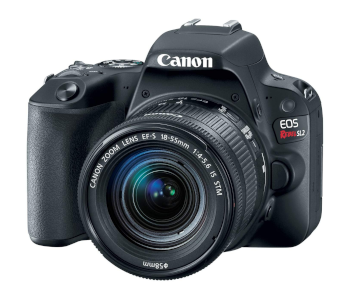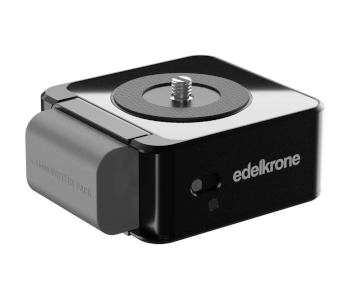The Growth and Evolution of Photography – Some Surprising Statistics
Up until a few years ago, photography was a field made exclusive by the high price of professional-quality photography equipment. That’s no longer the case today. With better accessibility to technology, the lines between photography as a hobby and as a profession have become blurred. It is no longer uncommon to see people doing photography for fun while using cameras and accessories that used to be exclusive to professionals.
Exactly how big has photography become? How many people do photography as a hobby or a profession? How sophisticated are smartphones nowadays when it comes to photography? Check out some of the numbers we’ve come up with.
Smartphones have tempered digital camera sales

From the 1950s to 2010, camera sales have enjoyed a steady year-to-year increase. This became further pronounced from the year 2000 onwards with the proliferation of digital cameras. Digital photography ushered in a new photography era that focused on ease of storage and sharing. It also ended the reliance of the photography industry on physical media and made “instant” digital previews a standard. In 2010, the camera industry hit its peak at around 121 million new cameras shipped.
Sales of digital cameras suffered a quick dive from 2010 onwards. This was brought about by two things – rapid improvements in the cameras of smartphones and a growing obsession with social media sharing. Although smartphone cameras in the early 2010s were far from the quality of DSLRs, they had the advantage of convenience and portability. Nowadays, the gap has become much smaller. Modern smartphone cameras have become even better than many point-and-shoot cameras of the past few years.
To emphasize how sharply camera sales have dropped, only 19 million new cameras were shipped at the of 2019 – about an 84% drop from the sales figures of 2010. From 2017 to 2018 alone, camera sales figures dropped by about 24%.
This drop in overall sales has vastly altered the landscape of the camera market. Instead of cameras dropping in prices, reduces sales have compelled camera manufacturers to increase the prices of their new products. Even with the introduction of mirrorless cameras to the market, this innovation has only spurred the growth of the industry by 2% – nowhere near enough to make up for the year-by-year drop in total sales.
The shift of the camera industry from casual to professional is best demonstrated by the growth in the relevance of cameras with interchangeable lenses. In 2019, interchangeable lens cameras accounted for about half of total global camera sales. The sales of fixed-lens digital cameras have dropped by 22% from 2018 to 2019. In fact, the market for point-and-shoot fixed lens digital cameras has become virtually non-existent because of the growth of smartphone photography.
The market sector for mirrorless cameras has now become the most valuable in the camera industry, surpassing the dollar value of DSLR cameras. This is despite more DSLS cameras being purchased. The value of the mirrorless camera segment lies in the fact that they cost around $980 on average – almost twice the $532 average cost of a DSLR camera.
The shrinking market has become a challenge for camera manufacturers who still have to dedicate a significant budget to research and development. To continue releasing new camera models, they will need to set them at higher prices. This does nothing to grow the market, making these new models attractive only to professional photographers. Meanwhile, smartphone cameras continue to become better and more user-friendly.
Industry estimates for the sales of digital cameras in 2020 do not depart from current trends, predicting a year-to-year drop of around 23 percent. Sales of fixed lens digital cameras are expected to drop even faster at a rate of 29 percent. The market for interchangeable lenses is expected to drop more conservatively at only a 16.4 percent reduction.
With less and less money coming in, it’s unlikely for the DSLR or mirrorless camera industry to return to the years where it attracts even casual photographers. As demand shrinks, these professional-grade cameras will continue to become more exclusive and more expensive. There will always be a small segment of professional photographers who will buy these products because they are more focused on performance. However, there is no doubt that convenience is a more important factor for a bigger portion of the general market.
Growth in the photography industry is slow but steady

The market size of the photography industry of the US in 2020 is estimated to be worth around $11.2 billion. While this figure sounds impressive, more sobering is the fact that it represents only around 1.1% year-to-year growth since 2015. The growth of the photography industry is slower compared to the overall economy of the US.
For reference, the term ‘photography industry’ in this context refers to all commercial and industrial photography services. This includes services for private events like weddings, portrait services, as well the photography and videography services used for the production of movies, TV shows, and commercials.
This puts photography at the lower end of growth compared to other services under the professional and technical sectors. Within this sector, photography only ranks as 23rd in size. Compared to all other service types in the US, photography ranks a measly 503rd.
The photography industry continues to face a lot of challenges. It is not considered an essential service, thus making it very vulnerable to the overall performance of the economy. A key indicator that is tied to the performance of the photography industry is per capita disposable income – people only buy photography equipment or take on photography services if they have a lot of disposable cash.
Advancements in technology have also lowered the barrier to entry for professional-grade photography. The growth in the usage of DSLR cameras has also spurred innovations that make them more user-friendly. Coupled with smartphone cameras getting better every year, there are now more people capable of doing DIY photography.
The low barrier to entry has also made the photography industry more competitive because of an increasing number of professional photographers. This has driven the rates for photography services lower for photographers, both new and established, to remain viable.
2020 is expected to be an unusual year for the photography industry. The global value of the industry is expected to suffer a 2.1% decline – from $36.9 billion in 2019 to $36.1 billion in 2020. The COVID-19 outbreak has massively reduced the demand for photography services because of a lack of public events and a downturn in movie and TV production.
However, the industry is expected to recover and grow to a value of $41 billion in 2023. Year-to-year growth is still estimated to be low at only 5%.
Photography as a marketing tool

Photography isn’t used just to document events such as weddings or sports competitions – it has also proven to be a valuable marketing tool. Whether in articles, websites, or advertisements, the use of professionally shot photographs has been proven to increase engagement and generate more views. In fact, images on Facebook typically receive up to 20% more engagement than videos and 352% more engagement than plain text.
In advertising a product or service, 60% of consumers are more likely to get in touch with a business that has a distinct image come up when the business is looked up on a search engine. Moreover, 67% of consumers believe that the quality of the image of a product has a significant effect on how likely they are to purchase the product.
There is also a pronounced difference between how well consumers respond to stock photography and genuine, unique photos. The use of real customer photos in websites has been shown to result in a customer response rate higher by 35% compared to websites that only use stock images. Marketers who use real photos have been shown to reach their goals faster – around 40% of them have been able to reach their goals on time, while only 13% of marketers who use stock imagery claim to have achieved the same.
The element of trust has become the key element behind the success of original marketing images. By establishing a deeper connection with consumers, marketers are more easily able to capture engagement. By having people take notice and remember their advertisements, marketers can get the proverbial foot in the door towards making a successful sale. According to a study, 65% of people can remember the contents of an article that comes with an image – a huge upgrade compared to only 10% when reading an article that is pure text.
With all the benefits of original images, advertising and marketing have been a fairly reliable market for professional photography services. It also helps that photography for marketing is seen as a business expense. In many ways, it is seen as an investment and thus is less vulnerable to fluctuating market conditions.
The rise of mobile photography

As evidenced by how it reduced the sales of digital cameras by more than 80% in less than 10 years, mobile photography has been proven to be a very disruptive force. Of the 1.2 trillion digital photos taken in 2017, 85% were captured via smartphones. The portability and convenience of photography with smartphones have proven to be an advantage strong enough to topple the digital camera empire.
The rise in mobile photography has also been driven by a massive improvement in smartphone camera technology. In 2020, there is simply no shortage of camera phones that can go head-to-head with some of the best digital cameras. For instance, the Huawei P40 Pro has a 50 MP main camera (that capture 4K video at 60 fps), an ultra-wide camera, and a 12 MP telephoto camera. The iPhone 11 Pro also has specs that can compete – a triple camera setup with a 12 MP main camera, a telephoto lens, and a 12 MP ultra-wide camera.
The phone camera isn’t expected to slow down anytime soon. There are already talks of Samsung releasing the Galaxy S21 next year with a 150 MP main camera sensor and a 64 MP telephoto camera. Although these are still rumors, it’s not unreasonable to expect phone cameras with that level of power to come eventually.
As a testament to the versatility of phone cameras, there are now entire feature films that have been shot and edited using just iPhones. It might still be gimmicky nowadays, but ‘iPhone filmmaking’ just might be an entirely new genre of films that can take off in the next couple of years.
The ubiquity of digital photography has influenced the behavior of consumers, both in terms of how they use their phones and they choose which phones to buy. According to studies, 90% of the people today who have taken photos say that they have only ever done it with a phone – never with any type of digital camera. 86% of Americans also consider the quality of the camera whenever they buy a new phone.
The rise of social media sharing sites like Facebook and Instagram has also changed how mobile photography is done. Selfies take a huge portion of mobile photography uses. Based on a study, 223 out of 400 respondents say that they take anywhere between 1 to 4 selfies per day. According to Google, the number of selfies captured per day on Android devices reaches an average of around 93 million. These selfies aren’t being shared in social media thoughtlessly – around 48% of Americans have used photo editing apps or filters to their selfies prior to posting.
Which trends will take over the photography industry?

The number of digital photos, taken in any method, is expected to continue to grow year-to-year. The figures for the yearly increase have been astounding so far – from 660 billion photos in 2013, the number has nearly doubled to 1.2 trillion by 2017. With more and more people getting their hands on camera phones and social media further encouraging mobile photography, it’s no longer surprising to see how quickly mobile photography has grown.
In the next years, we might yet see digital photography grow not just purely in terms of numbers but also in variety. Photography using drones will become more common as drones become more common and acceptable by societal standards. The quality of cameras in drones has also massively improved in the last couple of years, with several budget-friendly models now able to capture 4K videos.
360-degree photography is also an interestingly novel trend. The photos taken by 360-degree cameras provide an entirely new level of interaction, allowing viewers to interact and play around with them as they please. Today, 360-degree photos and videos can be captured using smartphone or DSLR cameras using special accessories, such as the edelkrone Motorized Pan System. With real estate advertising and big retail brands getting in one the 360-degree photography craze, this trend seems like it’s here to stay.
Although digital camera trends don’t seem too optimistic about the growth of that particular market segment, camera manufacturers continue to innovate to stay relevant. Many professional photographers believe that camera phones will never truly replace DSLR or mirrorless cameras, as the quality and control they provide are levels higher. However, digital camera brands have also kept pace with trends in social media sharing, giving their digital cameras the ability to quickly share photos.
Final thoughts
Although technology trends have come and gone, the industry of digital photography is here to stay. The past decade has seen a massive shift in the practice of digital photography, with the technology now being so much more accessible and user-friendly than ever. No longer is digital photography exclusive to pros who are willing to spend thousands of dollars on high-end camera equipment.
The movement of digital photography to a predominantly mobile platform has challenged conventional photography standards. No longer does “professional” photography mean having to lug around a bag full of gear – filmmakers have been able to capture end edit entire feature films on just a mobile phone. While digital (DSLR and mirrorless) cameras will always be relevant, we expect mobile photography to be the force that sets the standards for the wider photography industry moving forward.

